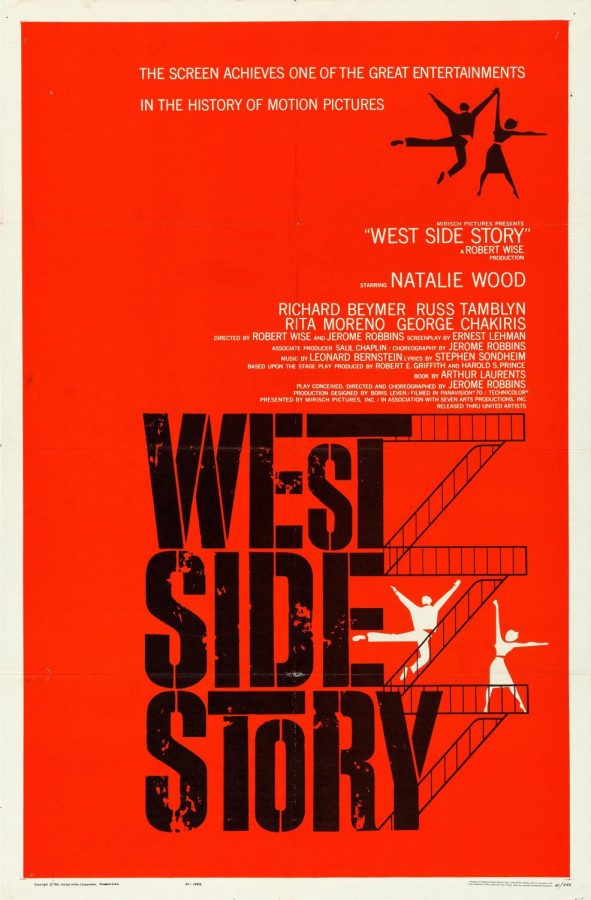‘West Side Story:’ 1961 v. 2021
The original “West Side Story” film came out four years after its Broadway debut in 1957.
April 14, 2022
Whether it be a musical or a film, “West Side Story” has been a classic for decades. More recently, it has been thrust back into the spotlight with Steven Spielberg’s Oscar-nominated remake. Some skeptics claim that the remake was not necessary, because the 1961 version already told the story well enough. Others say that the newer version was necessary and well-executed, therefore proving itself as a worthwhile remake. This raises the question: how are the 1961 and 2021 versions of “West Side Story” different from each other?
Heavily based on Shakespeare’s “Romeo and Juliet,” both films tell the story of a star-crossed pair of lovers named Tony (Ansel Elgort) and Maria (Rachel Zegler) in the mid-1950s. Instead of Capulets and Montagues, two New York gangs, one belonging to the Puerto Rican neighborhood and the other to the Irish-Polish one, are set up against each other in a turf war. The basic storyline of the two movies is the same, which is why many think of the remake as nothing more than the original.
However, a big difference lies in the sets between the two. The 2021 version utilizes the eerie and anxiety-provoking atmosphere of backlots to emphasize how this tension can lead to the detrimental racism that “West Side Story” brings to light. The 1961 version uses more ally-like settings, often not proving as powerful as the use of the backlots. On top of this, the newer version also uses more color and extensive cinematography techniques, in part due to the technological advances made since 1961. These add-ons electrify the story further and change the visuals enough to classify the remake as better than the original in many eyes.
Another contrast is in the casting choices made for the new film, which corrected the many mistakes made in the first. Almost all of the actors cast in the 1961 version were white, many of them darkened with makeup to make them appear as if they were Puerto Rican. This completely undermines the meaning of the story, being both painfully racist and poorly executed. The 2021 version corrected this mistake, while also discovering new Hollywood talents like Rachel Zegler and 2022 Oscar-winning actress, Ariana DeBose for her role in “West Side Story.” It also highlights the two neighborhoods much more equivalently than the older adaptation, further contributing to the argument that the newer version is better.
While both the 1961 and 2021 versions of “West Side Story” tell the same story, the newer version declares its artistic ambition, along with the fact that it corrects the racist mistakes of the previous version. While some may still state that the remake was not intellectually viable, the differences between the two emphasize its value.









